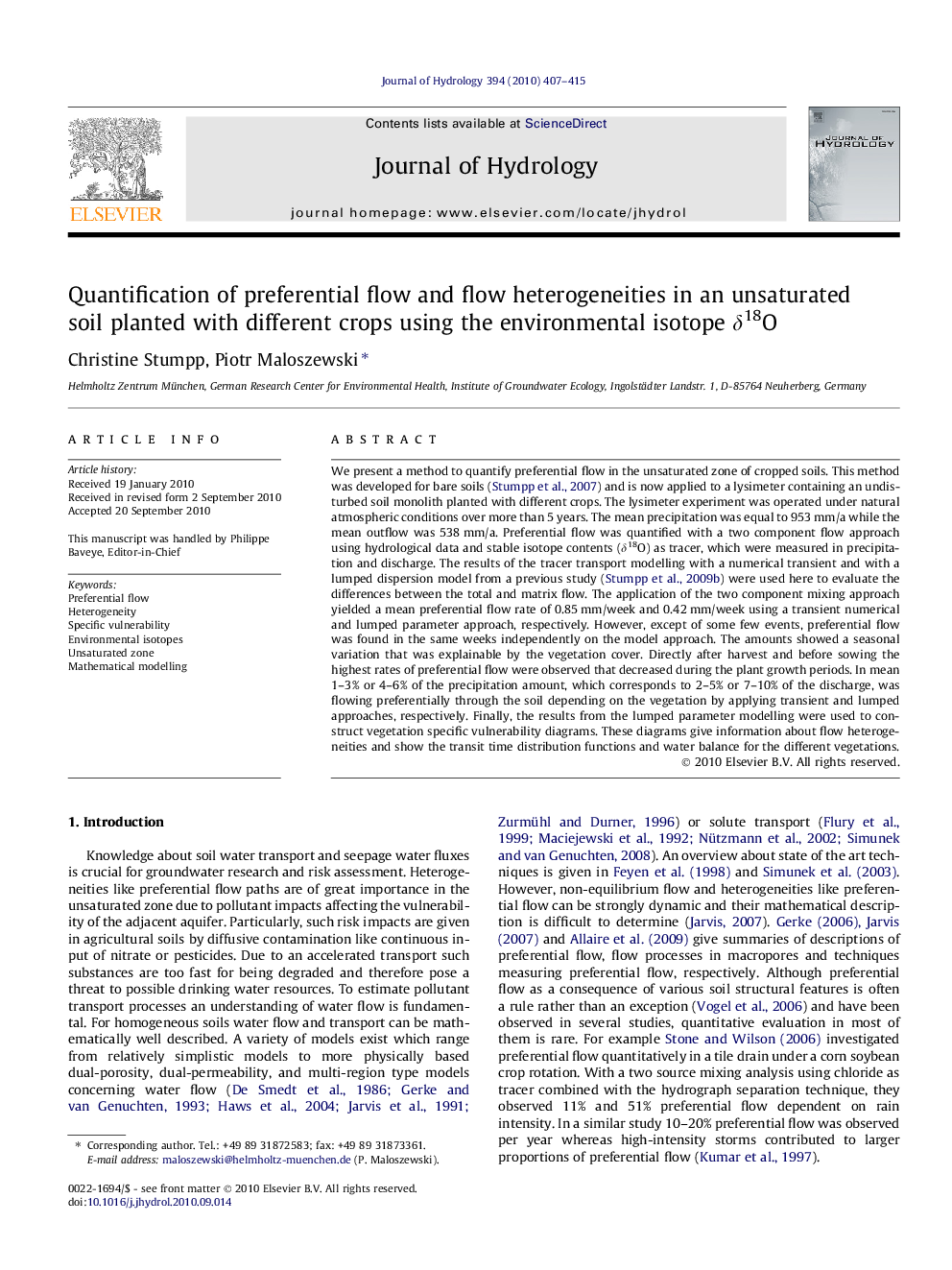| Article ID | Journal | Published Year | Pages | File Type |
|---|---|---|---|---|
| 4578053 | Journal of Hydrology | 2010 | 9 Pages |
We present a method to quantify preferential flow in the unsaturated zone of cropped soils. This method was developed for bare soils (Stumpp et al., 2007) and is now applied to a lysimeter containing an undisturbed soil monolith planted with different crops. The lysimeter experiment was operated under natural atmospheric conditions over more than 5 years. The mean precipitation was equal to 953 mm/a while the mean outflow was 538 mm/a. Preferential flow was quantified with a two component flow approach using hydrological data and stable isotope contents (δ18O) as tracer, which were measured in precipitation and discharge. The results of the tracer transport modelling with a numerical transient and with a lumped dispersion model from a previous study (Stumpp et al., 2009b) were used here to evaluate the differences between the total and matrix flow. The application of the two component mixing approach yielded a mean preferential flow rate of 0.85 mm/week and 0.42 mm/week using a transient numerical and lumped parameter approach, respectively. However, except of some few events, preferential flow was found in the same weeks independently on the model approach. The amounts showed a seasonal variation that was explainable by the vegetation cover. Directly after harvest and before sowing the highest rates of preferential flow were observed that decreased during the plant growth periods. In mean 1–3% or 4–6% of the precipitation amount, which corresponds to 2–5% or 7–10% of the discharge, was flowing preferentially through the soil depending on the vegetation by applying transient and lumped approaches, respectively. Finally, the results from the lumped parameter modelling were used to construct vegetation specific vulnerability diagrams. These diagrams give information about flow heterogeneities and show the transit time distribution functions and water balance for the different vegetations.
